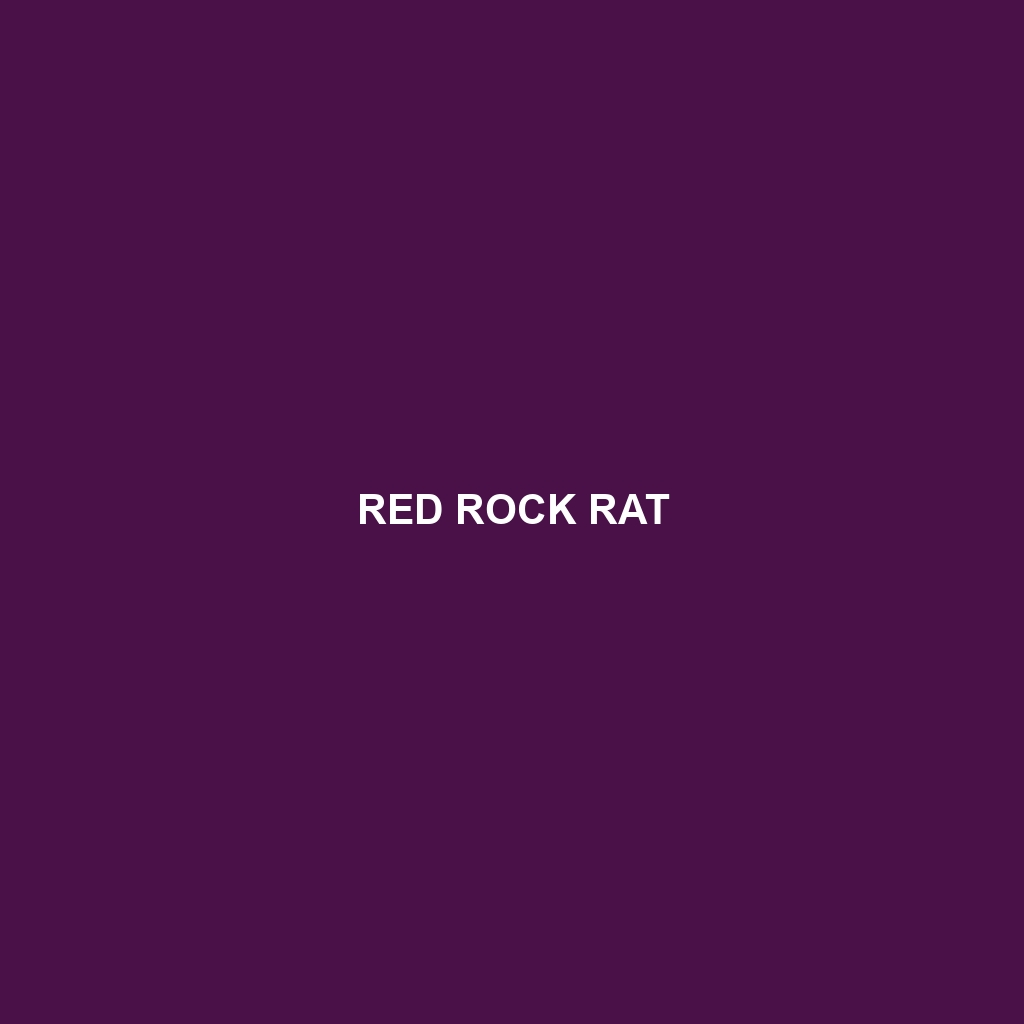Species Description: Red Rock Rat
Common Name: Red Rock Rat
Scientific Name:
Habitat:
The Red Rock Rat is primarily found in the rocky outcrops and mountainous regions of central Australia. This species thrives in arid to semi-arid environments, typically inhabiting areas with sparse vegetation, where it can find shelter in crevices and under rocks. The geographic range of the Red Rock Rat includes parts of the Northern Territory and western Queensland, making it well-adapted to these challenging habitats.
Physical Characteristics:
The Red Rock Rat is a medium-sized rodent, averaging between 24 to 30 centimeters in length, including its tail. Its fur is predominantly reddish-brown, providing excellent camouflage against the rocky terrains. Notable features include large ears, a pointed snout, and long, slender limbs suitable for climbing. This distinct physical appearance is one of the key identifiers for researchers and enthusiasts alike.
Behavior:
Red Rock Rats are primarily nocturnal, exhibiting increased activity during the cooler nighttime hours. They are known for their excellent climbing abilities, often navigating rocky surfaces with agility. Socially, they tend to be solitary, although they may be seen in small family groups. Their behaviors include foraging for food and building nests in protective crevices, making them a fascinating subject for study.
Diet:
The diet of the Red Rock Rat consists mainly of plant material, including leaves, seeds, and fruits. They have adapted their feeding habits to exploit the limited vegetation in their rocky habitats. The ability to consume various types of vegetation helps them survive in an environment where food sources can be scarce.
Reproduction:
Red Rock Rats typically breed once a year, with the mating season occurring during the warmer months, from September to December. Female Red Rock Rats can give birth to litters of 2 to 4 offspring after a gestation period of approximately 30 days. Maternal care is crucial during the early stages of life, with mothers actively nursing and protecting their young until they are mature enough to fend for themselves.
Conservation Status:
The Red Rock Rat is currently classified as ‘Vulnerable’ due to habitat destruction, climate change, and predation by introduced species. Conservation efforts are critical to ensure the survival of this unique species, as it faces increasing threats in its natural habitat.
Interesting Facts:
1. The Red Rock Rat is known for its exceptional climbing skills, which help it evade predators.
2. This species has a unique vocalization system, using a series of chirps and calls to communicate with each other.
3. Red Rock Rats can go long periods without drinking water, relying on their dietary intake for hydration.
Role in Ecosystem:
As a herbivore, the Red Rock Rat plays a vital role in its ecosystem by aiding in seed dispersal and promoting plant diversity. Its activities help maintain the balance of the vegetation in rocky terrains, which in turn supports various other species, including insects and birds that rely on the plant life for survival. The Red Rock Rat’s presence is essential for the health and stability of its ecological niche.
